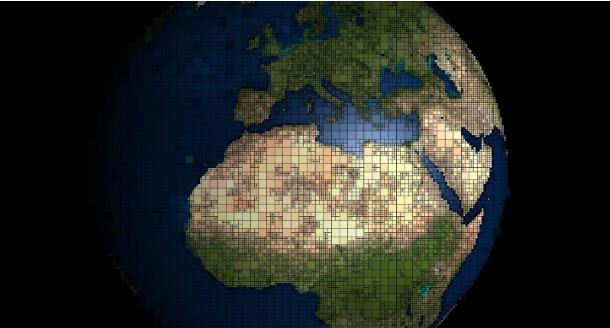
DHL’s $570M MENA Expansion Signals a Turning Point for Regional Logistics
(MENAFN- Zentury Media )
Logistics has always been one of MENA’s weak spots. The region sits at the crossroads of three continents, yet companies often face delays, inconsistent infrastructure, and higher costs than they should. It’s a strange contrast; such a strategic location, but networks that haven’t fully kept up. Businesses from retailers to e-commerce platforms know the frustration all too well.
Now DHL is making a $570 million move that could shift the balance. It’s not a small upgrade or a single new hub. It’s a wider bet on warehouses, smarter tracking, and greener transport, all designed to speed things up and cut inefficiencies. In a region chasing diversification and global trade relevance, this expansion could mark the moment logistics stops being the bottleneck and starts being the driver.
The Strategic Importance of MENA
MENA sits at one of the busiest crossroads in the world, linking Europe, Asia, and Africa. Over the years, ports along the Gulf, airports in major cities, and free zones from Morocco to the Emirates have built a foundation for trade that keeps getting stronger.
What’s changing now is the pace of investment. Many governments in the region have been working to move their economies beyond oil, and logistics is a big part of that push. New ports, upgraded airports, and digital trade lanes are all feeding into the same strategy of building stronger connections. In that setting, DHL’s $570 million plan is not just a one-off move. It’s part of a wider push that could see MENA grow from a stopover point into a central player in global trade.
Several factors explain why MENA has become such a focal point for logistics and trade:
- The region connects three continents.
- Trade corridors such as the Suez Canal and Gulf ports remain central to world commerce.
-
Governments are increasingly prioritizing logistics as a key driver of non-oil growth.
DHL’s Investment Breakdown
DHL’s $570 million pledge goes beyond a big number on paper. The money is being directed into practical projects that can reshape how goods move across the region:
- New warehouses and hubs are designed to speed up deliveries.
- Sustainable logistics centers built with energy efficiency in mind.
-
Digital tools that improve tracking, forecasting, and customer links.
DHL is putting money into both physical hubs and smarter technology. The goal is simple: move goods faster and more reliably, while cutting down on environmental impact. Across the logistics industry, companies are realizing that efficiency alone isn’t enough anymore - sustainability has to be part of the plan.
Sustainability and Innovation in Logistics
The logistics industry is under pressure to rethink how things are done. DHL’s MENA expansion highlights this trend, with sustainability built into the plan. The investment is focused on key areas that can make a real difference in how goods move across the region:
- Low-carbon transport fleets that reduce emissions while keeping deliveries on schedule.
- Smart warehouses powered by AI and IoT systems are making operations faster, more accurate, and less wasteful.
-
Digital tracking tools that provide real-time visibility across the supply chain, helping avoid delays and errors.
The Competitive Landscape
Competition in MENA logistics is intensifying. Alongside DHL, several international players, regional carriers, and local startups are expanding capacity. The race is less about who enters first and more about who builds the most resilient and innovative networks. DHL’s scale of investment shows its determination to secure market share in an increasingly contested arena.
At the same time, companies are exploring new ways to stand out. Green initiatives are becoming another differentiator, with sustainability increasingly influencing customer choices. In this environment, success is not just about size or speed - it’s about flexibility, technology, and the ability to respond to changing market demands.
Economic and Regional Impact
DHL’s $570 million investment has effects that go far beyond the company itself. The funding could create new jobs in logistics and technology, streamline trade with global partners, and make the region more attractive to foreign businesses. Stronger logistics networks support growth across e-commerce and digital leisure.
This shows how logistics influences not just trade, but also emerging digital industries that rely on fast, reliable connectivity. From streaming services to online casino platforms, the demand for stability and speed demonstrates why infrastructure investments matter. For online casinos, faster and more reliable networks mean smoother gameplay and a better overall user experience. These advancements encourage sector development while improving overall service quality.
According to the latest news in the economy sector reports, investments like this act as a multiplier for regional growth, supporting both traditional commerce and modern digital services.
Future Outlook for Regional Logistics
DHL’s expansion is more than a company milestone; it could signal a new era for logistics in MENA. Other companies are likely to follow, increasing competition and pushing for new solutions. Success will depend on how well technology, sustainability, and regional cooperation work together.
If current trends continue, MENA could move from being just a transit point to becoming a key hub for global trade, changing how goods are transported for years to come.
MENAFN12112025007650016520ID1110330171
Legal Disclaimer:
MENAFN provides the
information “as is” without warranty of any kind. We do not accept
any responsibility or liability for the accuracy, content, images,
videos, licenses, completeness, legality, or reliability of the information
contained in this article. If you have any complaints or copyright
issues related to this article, kindly contact the provider above.

















Comments
No comment